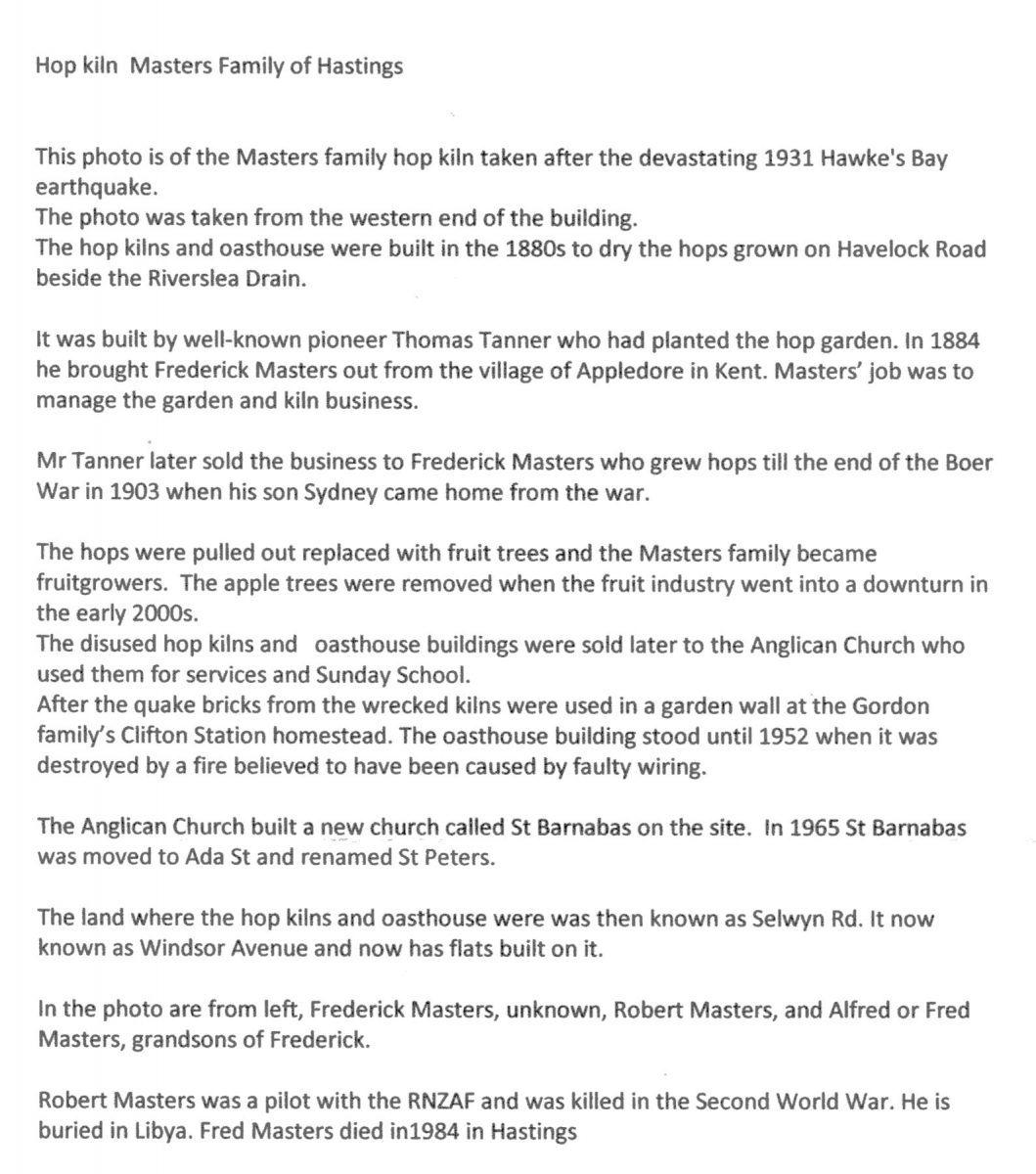Hop kiln Masters Family of Hastings
This photo is of the Masters family hop kiln taken after the devastating 1931 Hawke’s Bay earthquake.
The photo was taken from the western end of the building.
The hop kilns and oasthouse were built in the 1880s to dry the hops grown on Havelock Road beside the Riverslea Drain.
It was built by well-known pioneer Thomas Tanner who had planted the hop garden. In 1884 he brought Frederick Masters out from the village of Appledore in Kent. Masters’ job was to manage the garden and kiln business.
Mr Tanner later sold the business to Frederick Masters who grew hops till the end of the Boer War in 1903 when his son Sydney came home from the war.
The hops were pulled out replaced with fruit trees and the Masters family became fruitgrowers. The apple trees were removed when the fruit industry went into a downturn in the early 2000s.
The disused hop kilns and oasthouse buildings were sold later to the Anglican Church who used them for services and Sunday School.
After the quake bricks from the wrecked kilns were used in a garden wall at the Gordon family’s Clifton Station homestead. The oasthouse building stood until 1952 when it was destroyed by a fire believed to have been caused by faulty wiring.
The Anglican Church built a new church called St. Barnabas on the site. In 1965 St Barnabas was moved to Ada St and renamed St Peters.
The land where the hop kilns and oasthouse were was then known as Selwyn Rd. It [is] now known as Windsor Avenue and now has flats built on it.
In the photo are from left, Frederick Masters, unknown, Robert Masters, and Alfred or Fred Masters, grandsons of Frederick.
Robert Masters was a pilot with the RNZAF and was killed in the Second World War. He is buried in Libya. Fred Masters died in 1984 in Hastings












Do you know something about this record?
Please note we cannot verify the accuracy of any information posted by the community.